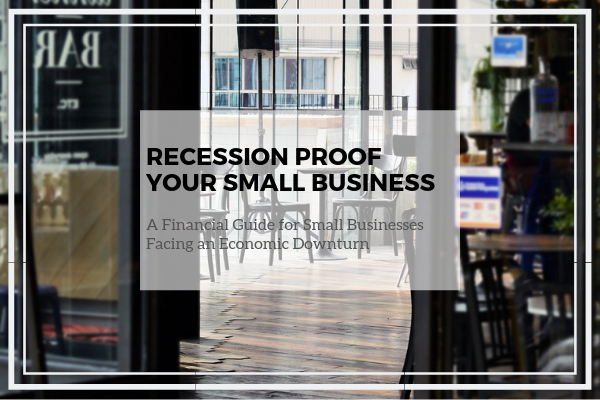What do customers really find valuable? Where is the assurance they will know a good deal when they see one?
 It wasn’t too long ago that historical relationships dominated. In business, trusted brands always prevailed. People typically went for brands they have known for years. When it came time to buying something, they always went back to the same old stores without considering other alternatives. Today, these historical relationships have diminished dramatically. Instead of historical relationships, what is driving success today is the ability to demonstrate superior value.
It wasn’t too long ago that historical relationships dominated. In business, trusted brands always prevailed. People typically went for brands they have known for years. When it came time to buying something, they always went back to the same old stores without considering other alternatives. Today, these historical relationships have diminished dramatically. Instead of historical relationships, what is driving success today is the ability to demonstrate superior value.
Clear Value at the Source is Not Necessarily Clear Value to Customers.
There are numerous examples of companies that invest substantial time, resources, and effort to provide their customers with what they see as premium quality and service. Often though they see their customers yawn in response. The only value that counts is value that customers are prepared to pay for.
In the retail book industry the business was once populated by independent bookstores that were generally owned and run by people with a passion for books. They selected books they thought their customers would appreciate and provided a high degree of personalized advice and attention.
This worked until lower priced and more convenient alternatives presented themselves such as Amazon.com. The independents were providing value in their own eyes but not value that their customers were prepared to pay for. When lower cost alternatives presented themselves, they fled.
In the Absence of Apparent Value, Price Prevails.

The domination of Amazon and retail chains have had corresponding effects. In each case, customers took a very hard look at the value they were getting from who they were doing business with and, in the absence of a clear reason to pay a premium, shifted allegiance to new, lower cost relationships. If it was cheaper, they would go there.
Value Winners Today can be Value Losers Tomorrow.
In the past, independent financial advisors were very successful. The share of mutual funds held by the banks declined though and during the same time period, the mutual funds sold by independent financial advisors who were not limited by their firm and free to sell any fund they chose to rose. Much of that change arose from the fact that the banks offered little or no advice with only marginally competitive products.
Despite the advantage of incumbency, customers moved away from banks as advisors who went after their business attracted them. These new players offered them superior advice and service and better performing alternatives.
Today these banks are going after these clients. They have introduced dedicated financial advisors who are well qualified and trained. They now have the ability to sell outside funds as well as the banks’ internal solutions, which, in response, have become more competitive.
Only Concrete Value is Seen as Real.

Customers are increasingly resistant to paying for value unless it is clearly visible. Even with all kinds of systems in place to provide high standards of service there will be no benefit unless customers notice them clearly.
Lessons About Value and Today’s Customer
The first step to having customers perceive value is to actually deliver value. Once that’s done, the next step is to communicate that value in an understandable way. The customer needs to be very clear about the value being provided.










 Cash flow is something that many small business owners have problems with, even when the economy is booming. However, when the economy is struggling, it is even more vital that business owners get to grips with this aspect of business management.
Cash flow is something that many small business owners have problems with, even when the economy is booming. However, when the economy is struggling, it is even more vital that business owners get to grips with this aspect of business management. It is not only the financial side of things that can cause headaches when markets are cooling. Deterioration in employee motivation, largely due to job uncertainty, can also have serious repercussions for a company’s productivity.
It is not only the financial side of things that can cause headaches when markets are cooling. Deterioration in employee motivation, largely due to job uncertainty, can also have serious repercussions for a company’s productivity.
 The percentage of the profits each will receive also must be written into the contract. A specific clause in the contract should state how the partnership will terminate or what terms should be present to end the business.
The percentage of the profits each will receive also must be written into the contract. A specific clause in the contract should state how the partnership will terminate or what terms should be present to end the business. Partnerships are more flexible than dealing with corporations although less flexible than a sole proprietorship.
Partnerships are more flexible than dealing with corporations although less flexible than a sole proprietorship. Each partner is liable for the business debts incurred by other business partners or the business transactions. So if one business partner makes a bad decision which cost the company plenty the other partners will also be liable for the debt.
Each partner is liable for the business debts incurred by other business partners or the business transactions. So if one business partner makes a bad decision which cost the company plenty the other partners will also be liable for the debt. It wasn’t too long ago that historical relationships dominated. In business, trusted brands always prevailed. People typically went for brands they have known for years. When it came time to buying something, they always went back to the same old stores without considering other alternatives. Today, these historical relationships have diminished dramatically. Instead of historical relationships, what is driving success today is the ability to demonstrate superior value.
It wasn’t too long ago that historical relationships dominated. In business, trusted brands always prevailed. People typically went for brands they have known for years. When it came time to buying something, they always went back to the same old stores without considering other alternatives. Today, these historical relationships have diminished dramatically. Instead of historical relationships, what is driving success today is the ability to demonstrate superior value.
